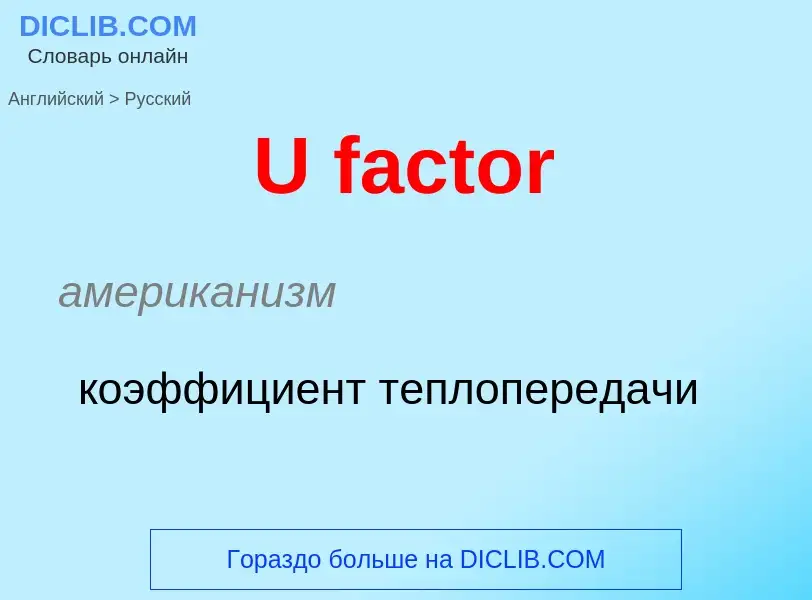Translation and analysis of words by ChatGPT artificial intelligence
On this page you can get a detailed analysis of a word or phrase, produced by the best artificial intelligence technology to date:
- how the word is used
- frequency of use
- it is used more often in oral or written speech
- word translation options
- usage examples (several phrases with translation)
- etymology
U factor - translation to russian
американизм
коэффициент теплопередачи
[ju:]
существительное
общая лексика
21-я буква английского алфавита
в грам. знач. прил. (также как компонент сложных слов) U-образный
подковообразный
дядя
синоним
Definition
Wikipedia

In the context of construction, the R-value is a measure of how well a two-dimensional barrier, such as a layer of insulation, a window or a complete wall or ceiling, resists the conductive flow of heat. R-value is the temperature difference per unit of heat flux needed to sustain one unit of heat flux between the warmer surface and colder surface of a barrier under steady-state conditions. The measure is therefore equally relevant for lowering energy bills for heating in the winter, for cooling in the summer, and for general comfort.
The R-value is the building industry term for thermal resistance "per unit area." It is sometimes denoted RSI-value if the SI units are used. An R-value can be given for a material (e.g. for polyethylene foam), or for an assembly of materials (e.g. a wall or a window). In the case of materials, it is often expressed in terms of R-value per metre. R-values are additive for layers of materials, and the higher the R-value the better the performance.
The U-factor or U-value is the overall heat transfer coefficient and can be found by taking the inverse of the R-value. It is a property that describes how well building elements conduct heat per unit area across a temperature gradient. The elements are commonly assemblies of many layers of materials, such as those that make up the building envelope. It is expressed in watts per square metre kelvin: W/(m2⋅K). The higher the U-value, the lower the ability of the building envelope to resist heat transfer. A low U-value, or conversely a high R-Value usually indicates high levels of insulation. They are useful as it is a way of predicting the composite behaviour of an entire building element rather than relying on the properties of individual materials.



